
5 minute read
The EPAA Researchers Investigate Threats of Basket Fishing Traps on Green Sea Turtles
FEATURE FADI YAGHMOUR – SCIENTIFIC RESEARCHER (EPAA)
The waters of the United Arab Emirates (UAE) comprise a wide diversity of local and migratory fish which have facilitated the achievement of food security for the nation. The fisheries in the UAE are primarily artisanal and the two main types of vessels that are utilised in local fisheries are the “tarad” and the “dhow”. The tarad is a fibreglass vessel around 8-10 m long, powered by outboard motors. The dhow is a larger traditional wooden vessel around 15 m long. Local fishermen apply a variety of methods to harvest fish including fixed and floating gill nets, beach seins, hookand-line and hadrah (barrier traps). However, the most popular fishing equipment used in the region, is a baited basket fishing trap known locally as “gargoor”.
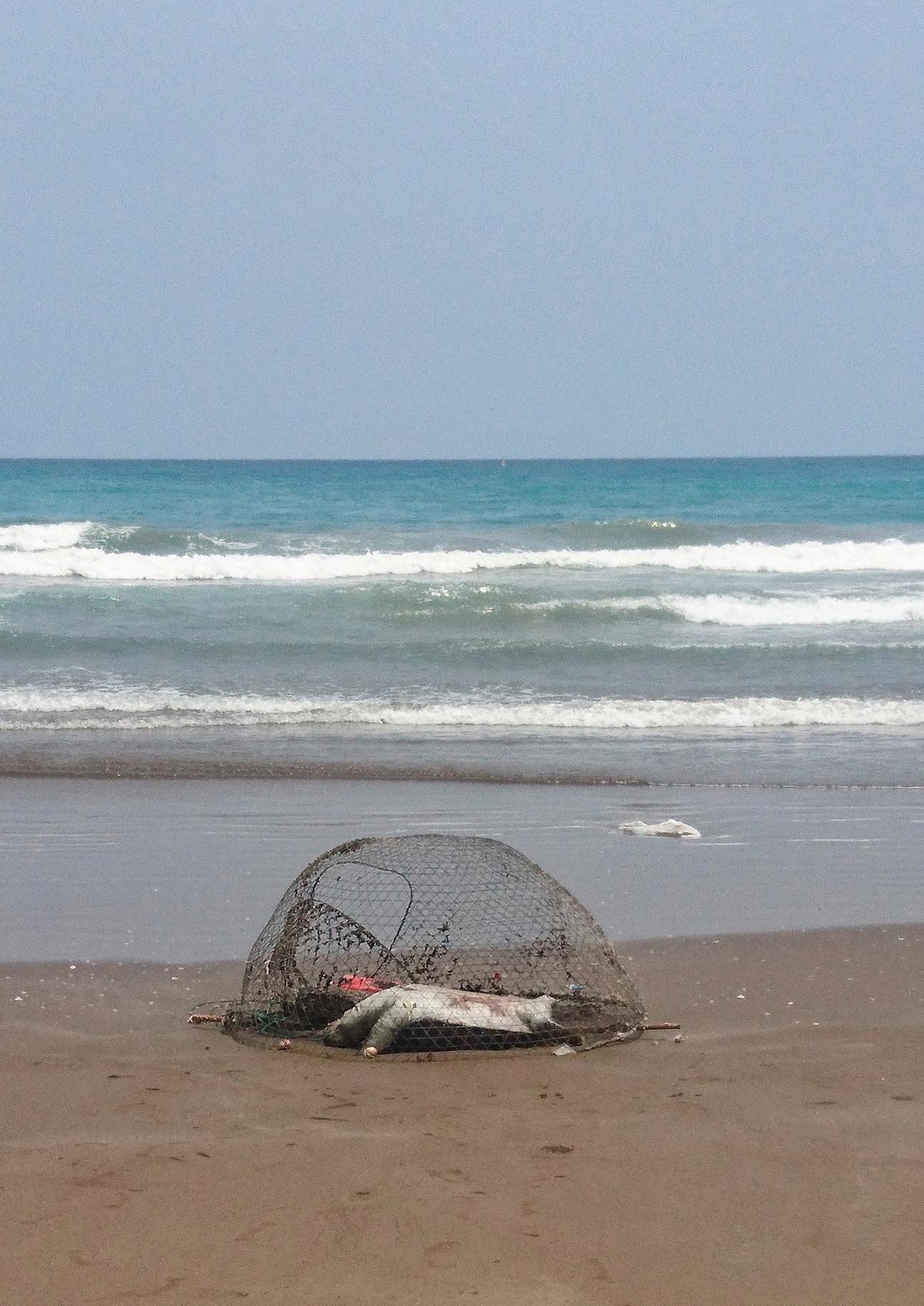
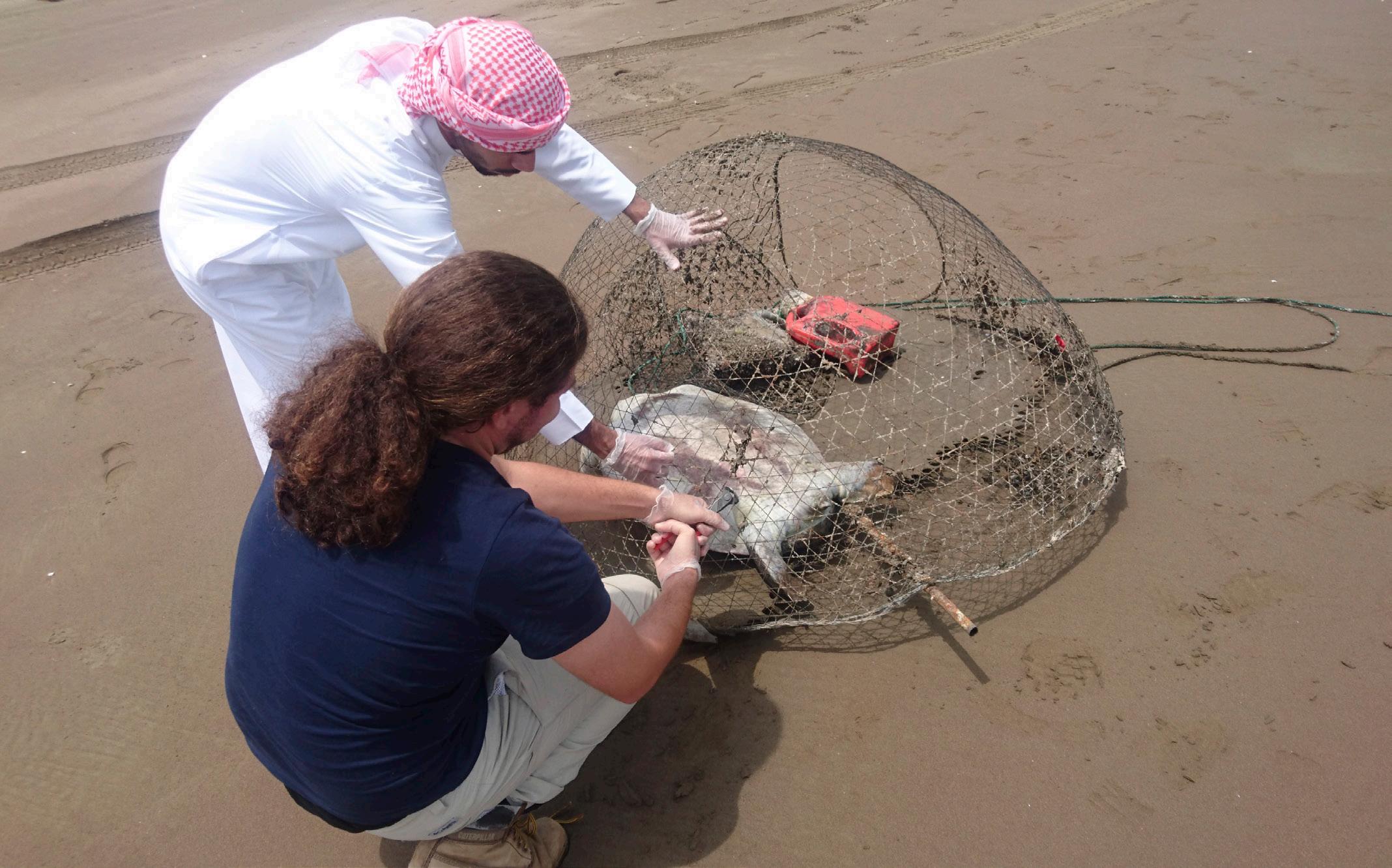
A juvenile green sea turtle being removed from inside a gargoor.
Gargoors are hemispherical dome-shaped basket traps. They have a funnel-like entrance for fish to enter, a circular ancillary base to support the trap and some models also have a back door for the collection of the catch. Gargoors are deployed from tarads and, at a larger scale, from dhows mostly in and around rocky reefs and coral reefs where they would target various fish, such as Sheri (emperors), Safi (rabbit fish), Sultan Ibrahim (goat fish) and Hamour (grouper). Traditionally, the gargoor was made by weaving date fronds but currently they are manufactured from galvanized steel. Over the past decades, catch rates of local fisheries, including gargoor, have suffered significant declines. This has resulted in the increase in the number of gargoors deployed. Unfortunately, as do all fishing gear, the gargoor presents multiple unintended environmental hazards. The use of gargoors may result in the by-catch of non-target species. The deployment of gargoors on coral reefs can be lucrative for fishermen in the short-term, but will result in long-term declines in local fish stocks as a result of the destruction of reef corals that are crushed under the weight of gargoors. Also, when a gargoor is lost, discarded or abandoned, it will continue fishing indiscriminately until it naturally decays; a process known as ghost fishing. In 2018 the Environment and Protected Areas Authority of Sharjah (EPAA) conducted the first ever investigation into the harmful effects of gargoor interactions on sea turtles.
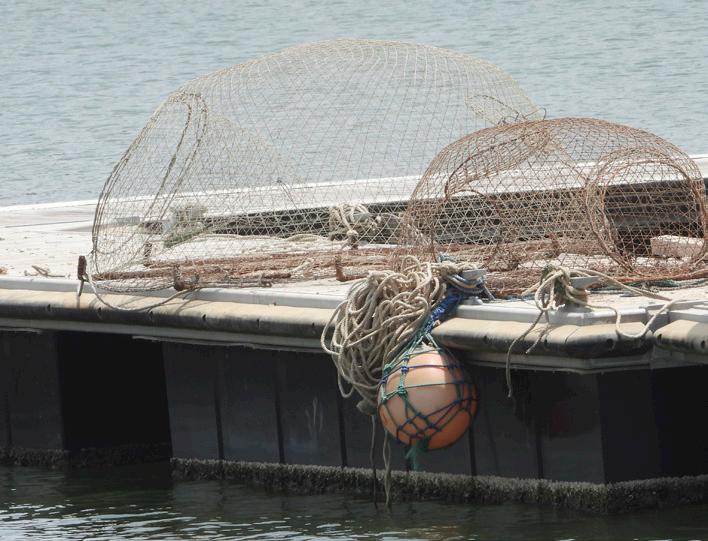
Gargoors

Loggerhead sea turtle that ingested gargoor fragments
The study, published in the Marine Pollution Bulletin, reports the investigation of two cases of green sea turtle mortality from the city of Kalba. The first case reports a juvenile green sea turtle trapped and drowned inside an abandoned gargoor. It is believed that this hazard was made possible by the partial decay of the gargoor which caused the funnel-like entrance to partially dislodge and swing in. This allowed for the turtle to enter the gargoor but, as the funnel does not swing out, it also obstructed its ability to exit the trap.
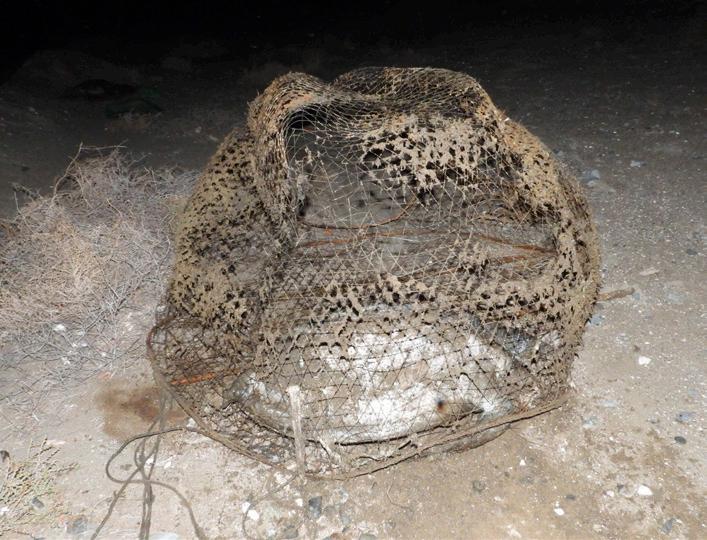
An adult female green sea turtle trapped inside a gargoor
The second case reports another green sea turtle that was found dead on the beach but appeared to have no external injuries. The turtle was transported to the EPAA laboratory for further exploration. During the post-mortem examination performed by EPAA researchers and Breeding Centre of Endangered Arabian Wildlife veterinary staff, it was observed that the turtle had ingested sharp metallic fragments that had punctured several areas of its gastrointestinal tract. Overall, 32 fragments had pierced the mouth, esophagus, stomach and intestine of the turtle. Comparative microscopic examination of the fragments revealed that they are fragments of a rusty gargoor. The examining researchers speculate that the gargoor was abandoned or lost resulting with its gradual decay and rust while simultaneously being colonized by macroalgae. It is well known that green sea turtles are herbivorous and they will opportunistically feed on algae growing on any surface. In this case, as the gargoor was rusty and brittle, fragments of the gargoor broke off and were presumably consumed along with the algae.
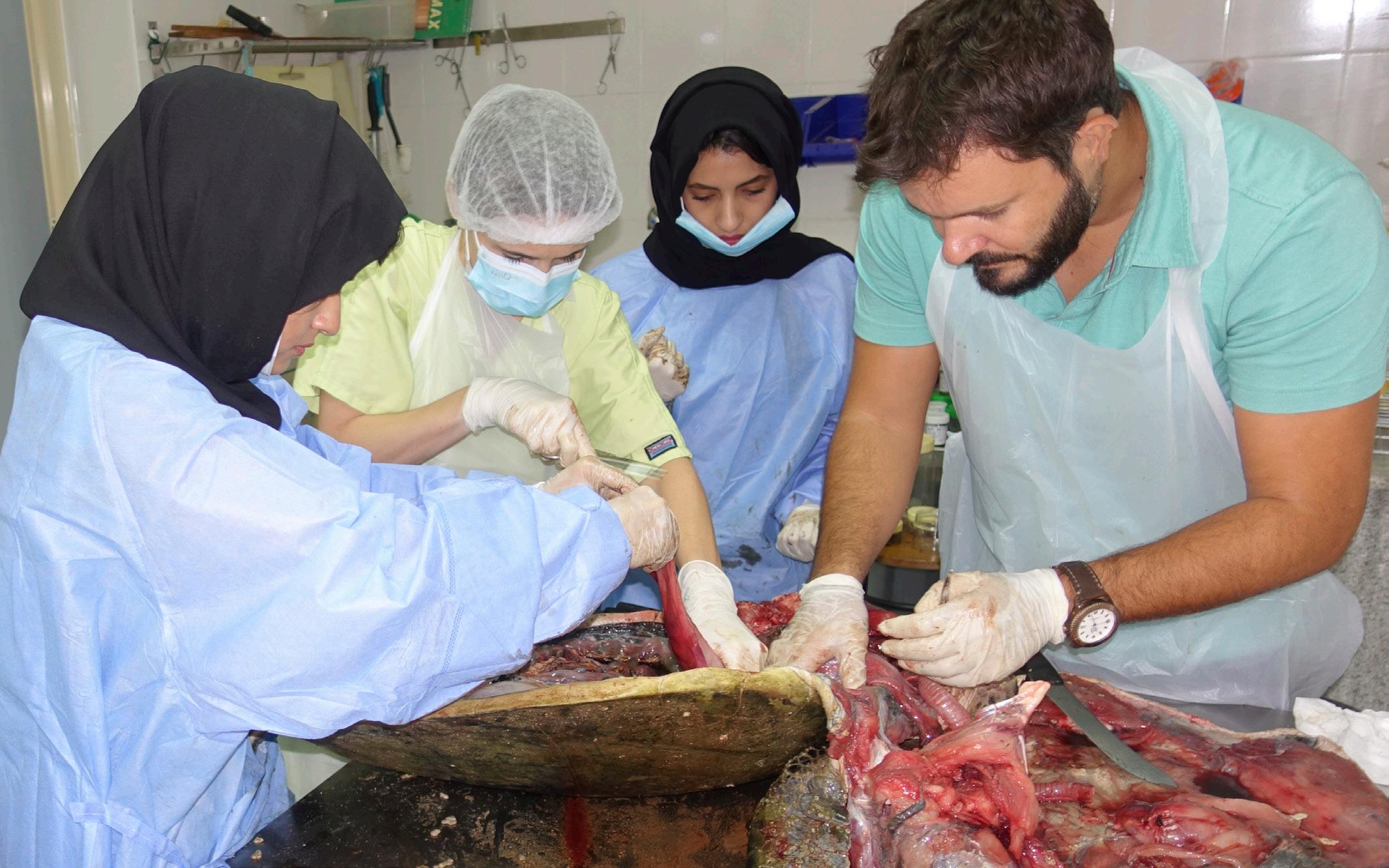
EPAA researchers performing a green turtle post-mortem.
Unfortunately, since the publication of this study, the Environment and Protected Areas Authority has recorded an additional four cases of marine turtle mortalities resulting from gargoor interactions: two cases of green sea turtles ingesting gargoor fragments, one case of a loggerhead sea turtle ingesting gargoor fragments and one case of an adult green sea turtle drowning in an abandoned gargoor. In all six cases, the gargoors were heavily decayed, most likely as a result of being lost or discarded.
A newer and functional gargoor would have an intact funnel-like entrance that is too narrow for most turtles to enter, and would also not be prone to fracture as marine turtles feed off its surface. Though there is little empirical data on the prevalence of derelict gargoors or other abandoned fishing gear locally, anecdotal accounts of divers in the region suggest that there are increasing numbers of abandoned gargoors in the local marine environment. The needless suffering and death of marine turtles and other marine species can be drastically reduced around the world with the responsible use and proper disposal of all types of fishing gear.

Injuries sustained by a green turtle after ingesting metallic fragments of gargoor (blackish nodules occurring where the intestine was punctured).

Injuries sustained by a green turtle after ingesting metallic fragments of gargoor (blackish nodules occurring where the intestine was punctured).
ABOUT THE EPAA:
In line with the vision of His Highness Sheikh Dr. Sultan bin Mohammed Al Qasimi, Supreme Council Member and Ruler of Sharjah, the Environment and Protected Areas Authority, under the leadership of Her Excellency Hana Saif Al Suwaidi, aims to protect Sharjah’s natural environment and conserve its rich biodiversity. This is achieved through data driven policies and increased public awareness and participation in supporting the principle of sustainable development to preserve natural and environmental capital to the benefit of present and future generations.
WEBSITE: www.epaashj.ae/
SOCIAL MEDIA PLATFORMS: www.twitter.com/epaa_shj www.facebook.com/epaashj www.instagram.com/epaa_shj/










